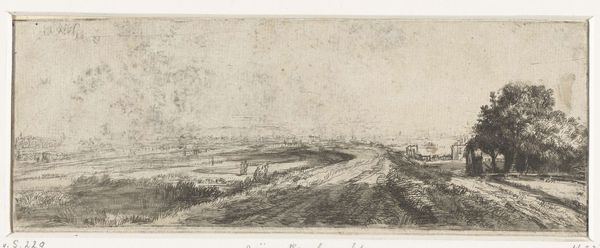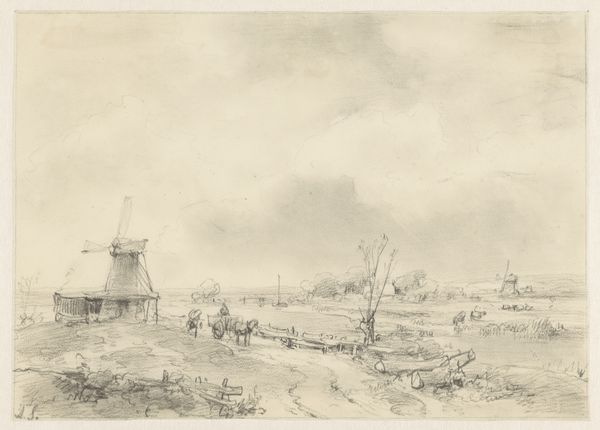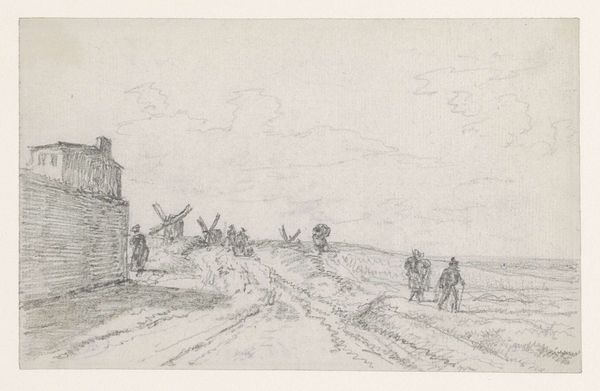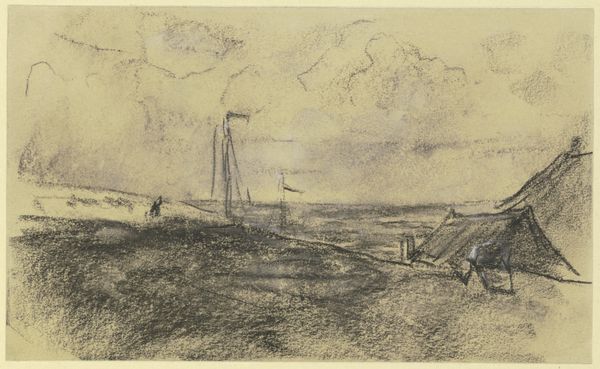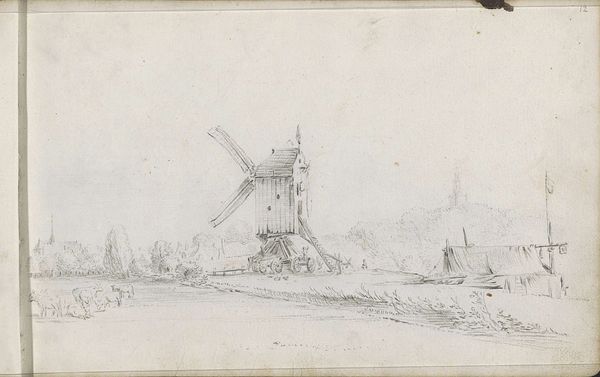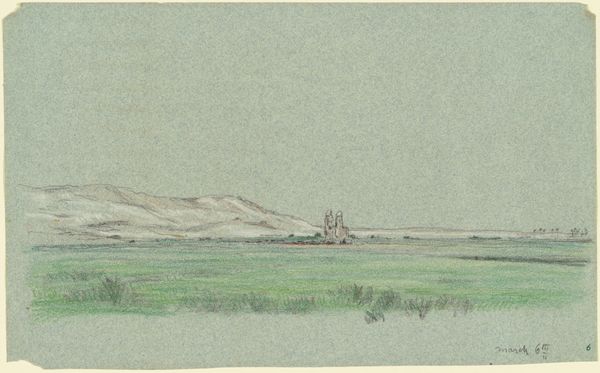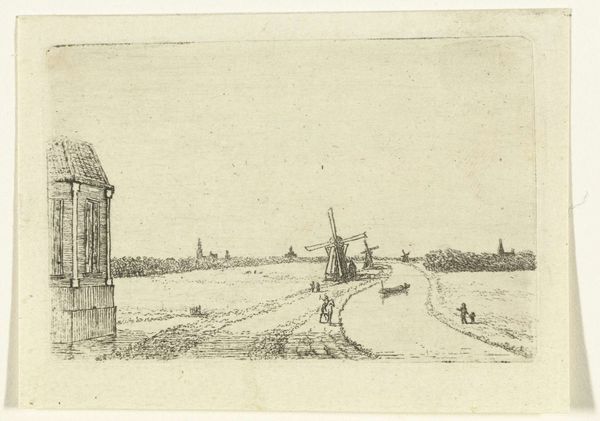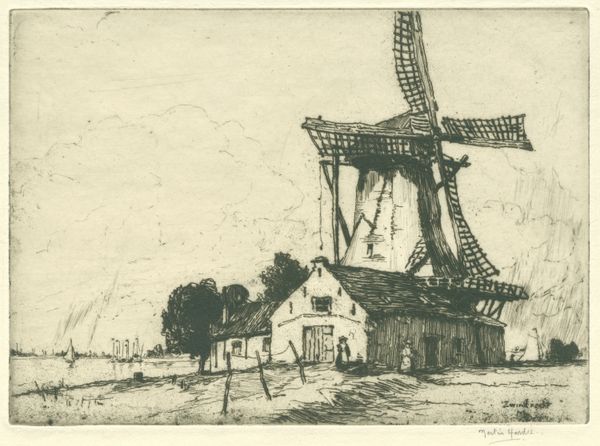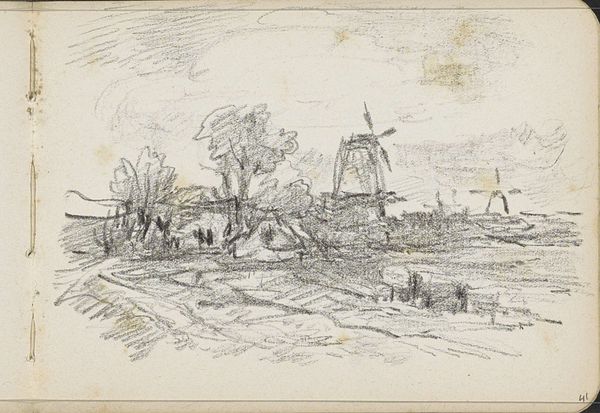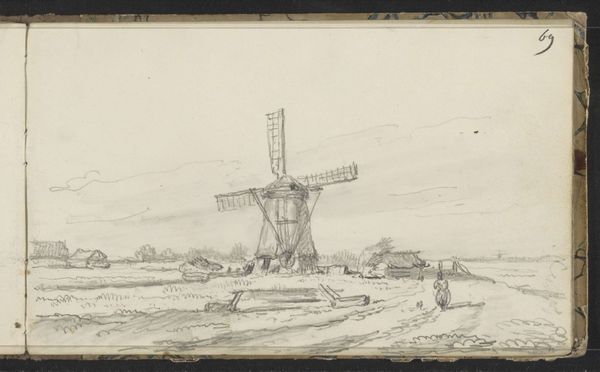
drawing, ink
#
drawing
#
baroque
#
landscape
#
vanitas
#
ink
#
history-painting
Copyright: Public Domain
Gillis Neyts made this drawing of a flat landscape with windmills and a gallows using pen and brown ink in the Netherlands, sometime in the mid-17th century. Notice how the gallows looms in the foreground alongside the windmills, which dot the horizon. This juxtaposition may seem odd to us now, but in 17th-century Netherlands, gallows were a common sight, often placed prominently on the outskirts of towns as a stark reminder of the consequences of defying the law. Neyts doesn't shy away from depicting the grittier aspects of Dutch society. But the windmills also offer another perspective. They were essential to the Dutch economy, used for everything from grinding grain to draining water and represent the innovation and industry that defined the Golden Age. To understand this drawing fully, historians consult a range of sources, including legal documents, economic records, and other visual representations of the period, piecing together a richer understanding of the complex social and institutional forces at play.
Comments
No comments
Be the first to comment and join the conversation on the ultimate creative platform.
